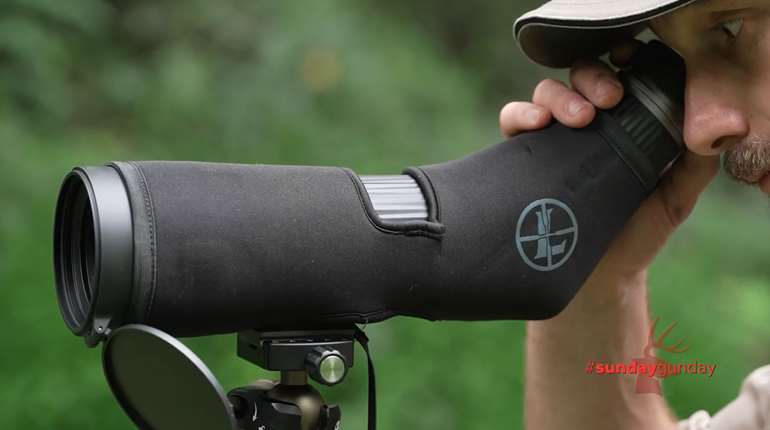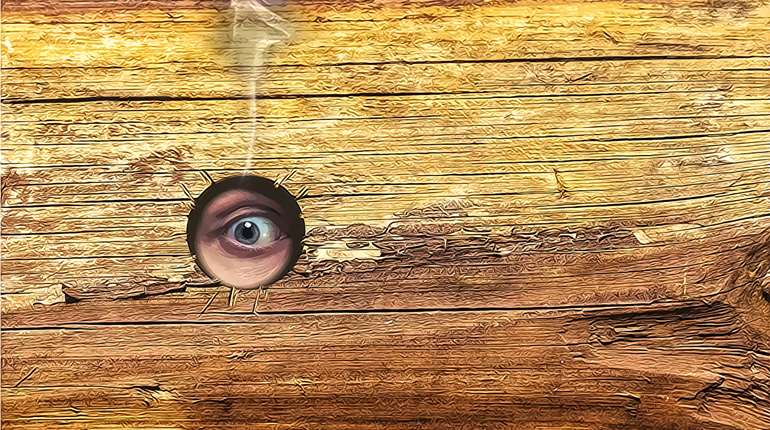My pal had them patterned. "They were regular, but not long in daylight," he said. The sliver of public land lay hard against property he couldn't hunt. "I found a tree so puny it shook in the rain. Tomato stake with leaves. Still, it was the only place."
These bucks, like many in the southern Rockies, bedded in piñon-juniper jungles above alfalfa that pulled them from the hills at dusk. "They ate at night," my pal said.
The tree almost buckled when he climbed 8 feet up it. "Somehow I stuck myself there. Somehow my scent didn't reach the first deer filing through." They were all bucks, one with eye-popping antlers. "Thirty-inch bone 15 yards off. And that tree wouldn't let me draw! I figured I was beaten."
An hour later, darkness closing, another buck came. The tree, the longbow's limbs and the shaft "were all aquiver. But I looked all the way through the ribs." The arrow sped where he looked, vanishing in a crimson splotch. The deer sprinted and fell.
A storybook finish to a hunt nicely engineered and executed: It happened two days ago as I write this. It will happen thousands of times this season.
But hunted deer quickly sense the threat that attends dawn and dusk. They learn to skirt the places hunters sit, and move when hunters aren't about. Like midday.
The piñon-juniper thickets that harbored the deer my friend saw that evening don't favor archers. Some whitetail cover in the East is darned near impenetrable. How can you sneak through brush where animals have chosen to hide when it signals your approach? Savvy bucks bed where prevailing winds or thermals deliver scent from paths hunters use. In dry litter and crusty snow, your step is noisy. Through lattices of brush, hidden deer catch your movement with eyes you never see.
As the sun climbs, such truths weigh heavily on hunters. They're ready to leave treestands, or promontories where they've sat since the sky got pink. They could switch to still-hunting and tiptoe into tight places. They could stay on stand. But they don't. "A waste of time." What they mean is hunting at midday is difficult or boring and, they think, unfruitful.
Well, it can be hard. But it's not always unfruitful. In fact, four of the last five bucks I've killed—whitetails and mule deer—have fallen between 10 a.m. and 2 p.m.
■■■
One dark day last November, as snow squalls lashed the prairie, I groped for reasons to persevere. Stinging, horizontal snow blew across my front as I eased through a patch of head-high weeds on a field fringe. A solid form—just a dark spot in a slot—caught my eye. I wiped snow from the binocular. There! The backline of a buck! A short sneak earned me a bigger window. I made the 80-yard shot with my 6.5 Creedmoor. This heavy, mature whitetail had become vulnerable late in the morning of a frigid, gray day that kept many hunters in camp. Yes, light levels affect deer activity. Low light lulls deer into a sense of security. Rain and snow further throttle light, so weather can trump the clock in keeping deer afoot.
Another prompt, of course, is rut. The urge to find sex puts bucks on the prowl all day long, no matter the light. Some years ago, still-hunting through whitetail cover with my wife, I paused for a snack. While I gulped raisins, Alice tugged my sleeve. I turned. "Isn't that what we want?" she asked innocently, and pointed. A buck ghosted by a few yards away, seemingly oblivious. A gap in the buffalo berry gave my .280 bullet a path. The deer dropped. Just being in cover during rut can bring success. Tactics matter less than your presence. Stay inconspicuous, and a buck may offer up himself. One of the biggest whitetails ever taken in Washington fell to a bowman who declined pokes at several deer to get a glimpse of one he'd heard behind his treestand. Confident rutting activity would afford him other shots, if not a record-book buck, he waited patiently and was rewarded when a rocking-chair rack appeared at his feet.
Because deer season where I live doesn't reach into rut, local hunters must chase bucks that have their wits about them, in cover that still has most of summer's foliage. Tough job. But October seasons mean long days, which can be sunny and warm. Deer that breakfast early are more likely to grab a snack near midday, just as we do when our next meal will be late. Moonlight alters feeding schedules, too. "Full moon—they'll feed all night." How often have you heard that bromide? There's some truth to it. While bundles of rod cells in the eyes of ungulates enable them to see better at night than we can, black sky still impedes foraging. A bright moon or even clear air conducting starlight makes it easier, so rumens fill up earlier—again, prompting a midday nibble.
■■■
On hot days, deer move to take advantage of shade that shifts with the sun. Such movement can work to your advantage if you wait near cover or still-hunt where you can move unobtrusively. Last fall, after an unfruitful morning glassing prairie sliced by cedar draws, I eased into one of those ravines. Hoof-patter brought me up short. A doe, then a buck, trotted from cedars just 30 yards away. I tagged the buck. Had I stayed where dawn traffic was visible far off, or assumed all deer were bedded, I'd have missed out.Watering intervals during hot weather are short enough that you can profitably patrol seeps and ponds. One day after a field lunch under an Indian summer sun, I trudged down a logging road. Suddenly, from a puddle at its hem, a bull elk dashed for cover. My Winchester dropped him. The biggest 5-point elk I've seen (the antlers scored 370 points!) fell to a hunter who, with no other plan his first day afield, sat in mid-afternoon by a forest pond. In dry climates during early seasons, deer and especially elk water routinely during the day.
Like light conditions, wind, rain and snow influence midday activity. In my experience, strong winds don't help hunters. Game seems on edge when wind howls, obscuring the little sounds that would otherwise alert them to hunters. Wagging leaves and limbs hide hunter movement. Gusts caroming around the woods rob scent of duration and direction. In one windstorm, I crept through open timber toward a couple of bull elk. The forest swayed in the blow, tree branches cracking. Tree-tops raked the blast from the sky; it boiled through the boles and splashed about like a mad flood. The elk couldn't see or hear me against the maelstrom of noise and motion; snatches of scent swirled like banshees. All to my advantage! But the elk sensed their vulnerability. Alert, ears swiveling, noses up, they were rockets ready for launch. With my arrow, I had to get within 25 steps. I couldn't.
While wind puts animals on alert, it can coax them out of tight places that become a trap when a crush of noise and movement scrambles their senses. A study in the South, which correlated records of 35,000 hunter-days with data from the National Weather Service, showed that over 20 years, wind speed had a linear relationship to hunter success. Before you sally forth in a gale or strap yourself to a treestand, though, bear in mind that temperature plays a hand. Alabama, where howling wind seems to favor hunters, doesn't endure the sub-zero chills attending northern blizzards. In these blows, even elk, with their thick hides and long hair, hunker near windbreaks. Once, after climbing to a mountain plateau, I found midday conditions on top severe, with blowing snow and numbing cold. The elk were clustered in a slab of meadow in the lee of thick conifers. Downwind and obscured by swirling snow, I sneaked within easy range of a 6-point bull then declined the shot. The storm had anchored this herd where it wouldn't lounge in mild weather.
Shorter days in late hunting seasons give you less time afield and the game more time to eat at night. But they also bring low temperatures, which require animals to boost their calorie count to sustain health. At the same time, plants have shriveled. Succulent green leaves have become brown, and nutrient levels in many plants have dropped. Snow makes forage harder to reach and eventually causes crowding. Result: browse lines from focused feeding. In sum, the animals must stay afoot longer and get up more often to fill their rumens. Of course, you must also work harder in cold, snowy conditions. You'll need warm clothes, more food. But those late-season midday periods can deliver good hunts, as few hunters brook the cold long after dawn. If you want the hills to yourself, prepare to stay afield all day, or at least most of it. Your odds will go up on a steeper curve than they would in the long days of autumn.
■■■
Almanac predictions of game movement may be less useful than fish forecasts for anglers. More variables affect mammal behavior than are found in most aquatic habitats. Tying foraging and migration periods to clock and calendar is futile. Seasons afield will give you a sense of when game should be most active and most vulnerable, and where it will go or stay. Beyond that, the prize goes most often to hunters who hunt the most. "There's no substitute for time in the woods." That observation came from a fellow with a wall full of antlers. "You can't say deer bed at dawn and rise between noon and 2, then bed until dusk. Here in the North, dawn comes before 6 a.m. in September, not until 7:30 in rut. Midday weather can boot deer out of bed early or keep them there all day. Hunter traffic matters. So does food. If animals must travel far to reach it, or eat a long time to get what they need from it, they start moving early."
Well-structured studies by Dr. Kent Kammermeyer and Dr. Larry Marchinton showed that deer move more during the day than during the night, year-round. While their work confirmed, predictably, that in fall most movement occurs at dawn and dusk, they conceded whitetails could appear at any time.
Game activity depends a lot on available day cover. If an elk herd finds a copse of north-slope conifers in which to hide from hunters, and that site offers water plus easy access to third-cutting alfalfa in yon valley, the herd will likely camp in those conifers until rousted. The animals may "knock about" frequently during the day, perhaps to a nearby wallow or just to dodge a shaft of sun boring through a hole in the canopy. I've hunted in such hangouts and taken bulls from some. Most of those elk were on their feet. One, in afternoon, had just risen from his bed to start down the mountain. Another, in late morning, was on his way back from the fields when we met head-on. So accustomed was this elk to the security of the cover, he paused, disbelieving. Another time, I spied an antler tip in shadows above a seep just after noon. My client killed the 6-point in its bed.
Mule deer differ in habit. If a buck has taken up residence in a piñon-juniper thicket or a patch of mountain mahogany, he'll likely move little during the day. This cover is commonly very tight. The animals using it are most often solitary or congregate in bachelor groups that don't need large blocks of brush. Mule deer like to see, so many beds of mature bucks have a grand view while hiding the deer in a nondescript tangle that doesn't draw attention. It offers excellent wind coverage, especially of up-running, daytime thermals. Several exits give the resident deer easy access to open ground for fast travel. Out of bed, this buck is exposed, vulnerable. The biggest mule deer I've shot managed to conceal himself behind a bush for most of an hour while I glassed the mountaintop at midday. An antler tine finally caught my eye.
To get mule deer in dense fields of scrub oak and mahogany, and whitetails in cedar swamps and steel-wool second-growth, your best bet is to waylay them close to the bedding area, where they'll appear before night-foraging, and at dawn as they return to cover. After cold nights, I've spotted and killed deer and elk on east slopes, where they snag early sun to warm up before heading into thickets.
During midday, you'll focus on cover. But don't assume it's all woody! One of the best whitetail bucks I've taken was standing in tall grass in early afternoon, only head and antlers visible. Another lay in grass barely tall enough to hide a poodle. My partner, just above me, spied that animal—and froze. He did not look at me or signal. Clearly, he was eyeball to eyeball with a buck! I eased toward him one slow step at a time. As the curve of the hill fell away, I saw tines, but the grass precluded even a kneeling shot. The stare-down was brief. When the buck blasted from bed, I flopped prone and glued my eye to the opposite slope. The animal galloped into view and, against the odds, paused at 220 yards.
When dawn and dusk give you the cold shoulder, commit a few middle hours to the stand, or ease along game trails into bedding cover. Whichever tactic suits you and local conditions, look carefully. Stay inconspicuous and always ready. And never assume you're beaten.




































